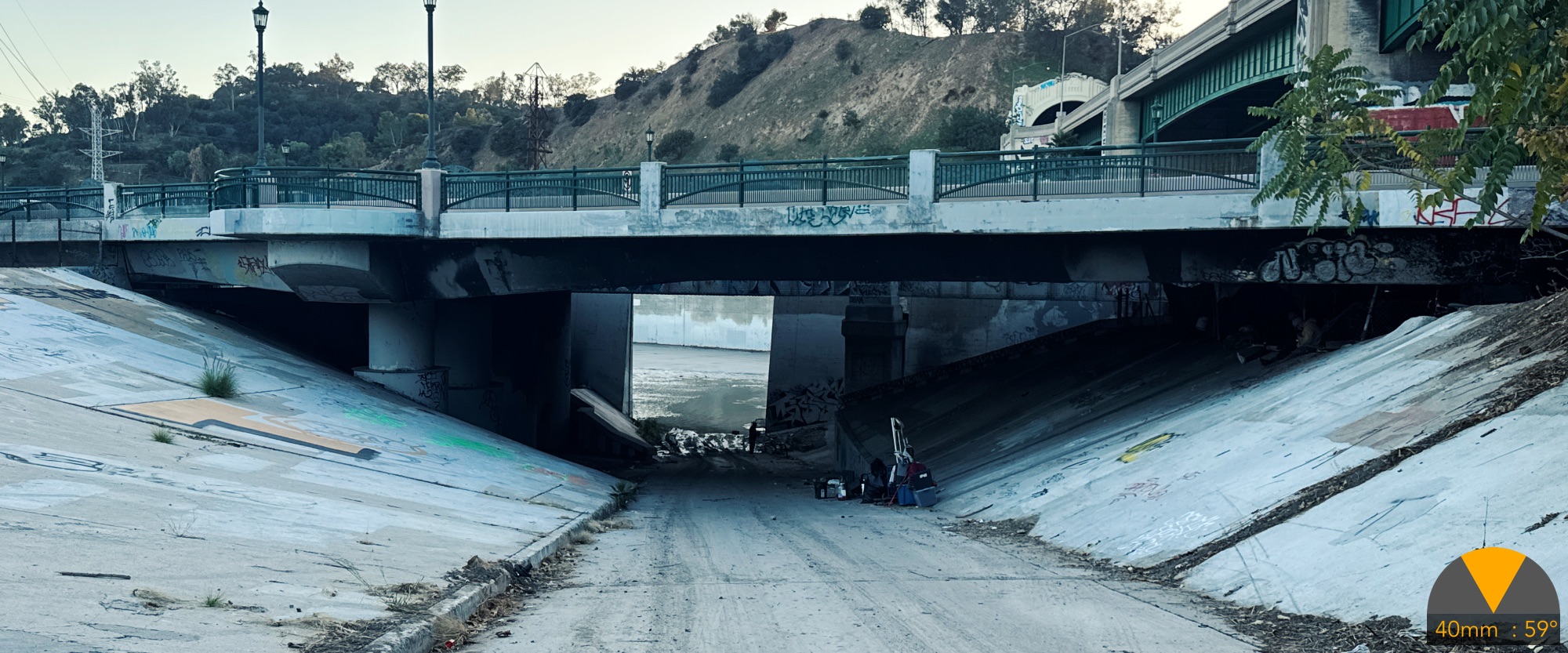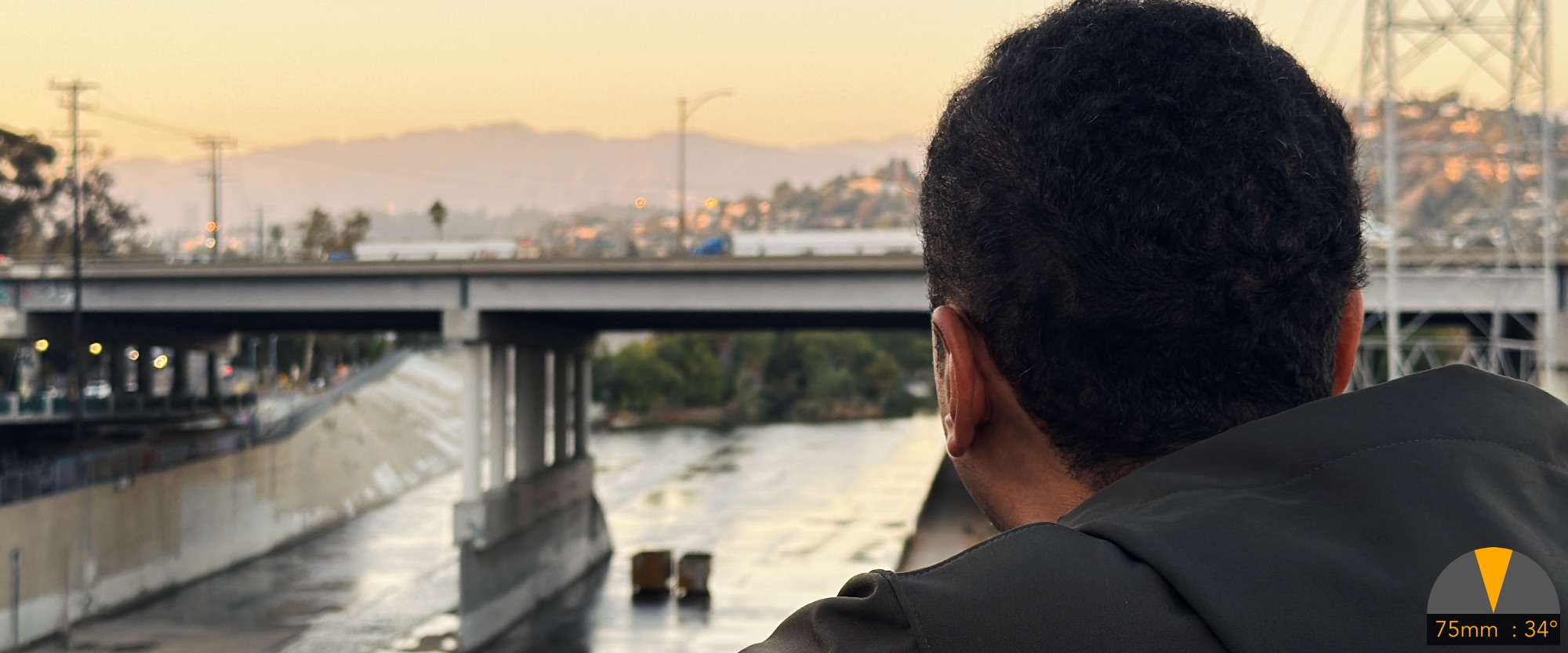
We’re one week out from our trailer shoot, and this week Kevin and I spent our days (and nights) walking through downtown Los Angeles with a singular mission:
Find the visual language of this film before we ever roll camera.
With our November shoot rapidly approaching, we needed to solve a unique creative puzzle: How do you create a compelling trailer that tells the story of Concrete River when you haven’t cast the entire film yet – or even shot it?
The answer came through pavement, patience, and a $30 app that’s helping how we approach every frame.
THE REALITY CHECK
What’s Working:
The team energy is electric. Everyone sees the opportunity in front of us with this trailer shoot. We’re not treating this as a “lesser” production – we’re bringing the same energy and intention we’ll bring to the full film.
We have three critical elements to accomplish next weekend:
1. Shooting everything with Xazmine. We’ve cast up-and-coming singer Xazmine to play Noelle, Travis’s daughter. She was just signed by CAA and is going on tour for an undetermined period of time. So our first priority is capturing her scenes. This includes the film’s most important and emotional moment: when Travis and Noelle share the same space with each other.
In an ideal world, we’d shoot most of the film first and save this scene for later. But ideal circumstances are never a reality in filmmaking. JQ and I have discussed how this scene will run and we’re having a rehearsal day Thursday to really dial it in. Kevin and I plan to overshoot this scene – not just to have editing options, but to give us the opportunity to discover the visual language of this film.
This is the benefit many independent films don’t get.
We have a chance to build the visual language before principal photography. Large films get to test and experiment. Smaller ones often don’t. We’ll have our working camera, lenses, lights, and production design. So we can see how all the elements work together and find how exactly this film works visually.
When we begin shooting in earnest, we’ll already be a well-oiled machine.
2. Creating the trailer’s story. Chris is going to AFM two weeks after we shoot, so we need a great trailer to present for that event. We have our lead actor and Noelle cast.
But we haven’t cast Alice, who is the heart and soul of the actual film.
We could cast an Alice who won’t be in the final film. But that could confuse investors or distributors. They’ll think the film is fully cast and begin thinking about marketing based on current casting. We could avoid Alice entirely, but then we lose a key part of the story.
Our approach: Focus on the relationship between Travis and Noelle while teasing Alice’s entrance. We’ll cast a double who can skateboard similar to Alice and shoot the actor’s eyes. Alice can then become a part of the story without being completely present.
This gives our potential partners room to have input.
That’s the key element of bringing on investors or starting distribution. We want them to be partners who have opportunity to weigh in on the process. Too often, we filmmakers craft stories based on our own egos. We believe the propaganda that we auteurs are geniuses whose sole voice needs to be listened to. While it’s our vision that begins the film and sees it through, it’s everyone’s input – whether we implement it or not – that really crafts a film. Our investors and distribution partners should feel like team members, not resources to be drained.
3. Recording the music. Our last day of shooting will be inside a recording studio where we’ll create three songs for the film – the songs Noelle and Travis are working on together. This is a key piece of getting people excited.
Kevin and I have had many discussions about what kind of film this is. While Travis is experiencing homelessness, this is not a film about that. This is a film celebrating hip-hop and music where the main character is experiencing a temporary condition. That not only sets the film apart.
But showcases those in the real world experiencing the same condition as the true human beings that they are.
The Challenge:
Getting all our locations locked down with enough time to shoot everything. We have a permit pending to see if we can shoot on the actual LA River. We thought everything could be shot in one area, but it looks like we’ll need to move around different parts of downtown quite a bit.
We’re also shifting some of the times in the trailer. Since our time and resources are limited, some locations – like the entrance to the LA River – are simply too dark to shoot at night (without a multi-million dollar budget). So we’ll shift the time to golden hour during the day. Which means a mad scramble to shoot everything.
But the experience of our team will help us maximize that timeframe. To quote Kevin, who worked on The Mandalorian:
“We can make golden hour last for 4.”

The Downtown Discovery:
Kevin and I walked through downtown during the day and night. He used a tool called Artemis – a $30 downloadable app – that allows us to create frames with the exact lenses we’ll be using (the Pavo series anamorphics).
Kevin mentioned that our job is to find the frame that works for the story. Then the scene we plan will live within that frame. We’re heavily inspired by street photography and documenting the city of LA as a character.
While scouting, we noticed how the bridge looked both beautiful and imposing to people within a frame. It’s a place of beauty that almost crushes the people who walk on it. This is a key part of the story and something we’ll use to great effect.
We’d scouted the Arts District earlier last year and saw how busy it was. But coming back, we noticed how quiet everything is now. So we’re thinking of shifting a key part of the shoot to Little Tokyo where foot traffic is busier and will help us show scope without having to cast many extras.
The Solution:
For golden hour lasting four hours: We can start a little earlier and go a little longer than just one hour. By exposing in a certain way, and through color correction, we can have our one hour go for four. The evening golden hour is between 5-6pm. But we can start around 3pm and go until 7pm and have it all look continuous thanks to Kevin’s experience.
We can utilize this to great effect – having our trailer have an elevated look while maximizing our time shooting with Xazmine.
Lessons For Fellow Creators
- Use everything to plan your visuals in the beginning. Apps like Artemis or just bringing a stills camera can help give you an idea of where to start. The key is using it as a starting point and leaving space to pivot when you see how the scene is playing out with actors.
- Give your partners an opportunity to collaborate. Your cast, crew, financiers and distributors are partners to work with, not resources to exploit. Make them a part of the process, not disgruntled employees. Even if you don’t agree with their exact opinion or recommendation, there is a truth in what they say. So work to find it.
- Use every circumstance as an opportunity to learn. I was initially downtrodden about not shooting in November. But now I see how, without this push, we would have made a worse film. We’ll keep working just as hard to make the film. But now we have extra time we needed in order to create a great piece of art.
LOOKING AHEAD
The next challenge is putting all our logistics together. We have to finish our shot list, secure our permit for locations, and actually shoot the trailer. We’re starting at 10am on Saturday and then 4pm on Sunday.
Part of my next step is to get as much rest as possible.
The Thursday rehearsal with JQ and Xazmine will be crucial for dialing in that emotional Travis-Noelle scene. We’re treating this trailer shoot with the same intensity and preparation as the full production – because in many ways, it’s even more important. This is our chance to test, learn, and refine before we commit to principal photography.
Community Question: Have you shot in downtown LA? What locations have you found that work well for indie productions? We’d love recommendations for spots that offer visual interest without permit complications, especially in the Little Tokyo or Arts District areas.
Production Stats:
- Production days completed: 0 (trailer shoot next weekend)
- Budget status: $300K target, several potential investors interested in seeing the trailer
- Team morale: Very high – bringing the same energy to trailer as we will to the full film
- Biggest win this week: Downtown location scout and getting our trailer script solidified
- Timeline: Trailer shoot next weekend, AFM presentation two weeks later, principal photography early 2025
Following the journey of Concrete River.
Previous entries: CR Journal 1 | CR Journal 2 | CR Journal 3 | CR Journal 4 | CR Journal 5 | CR Journal 6 | CR Journal 7 | CR Journal 8 \ CR Journal 9
